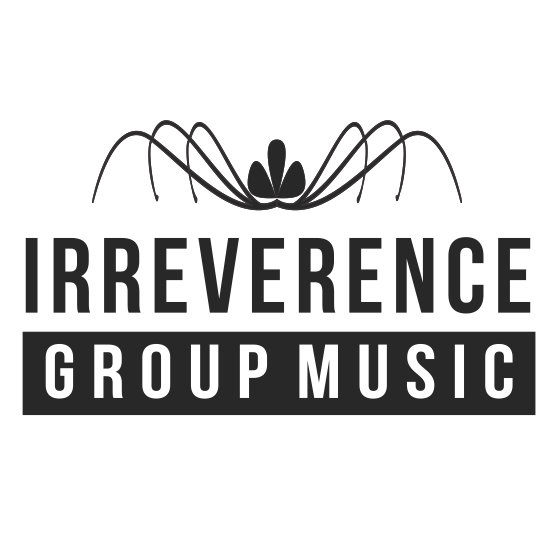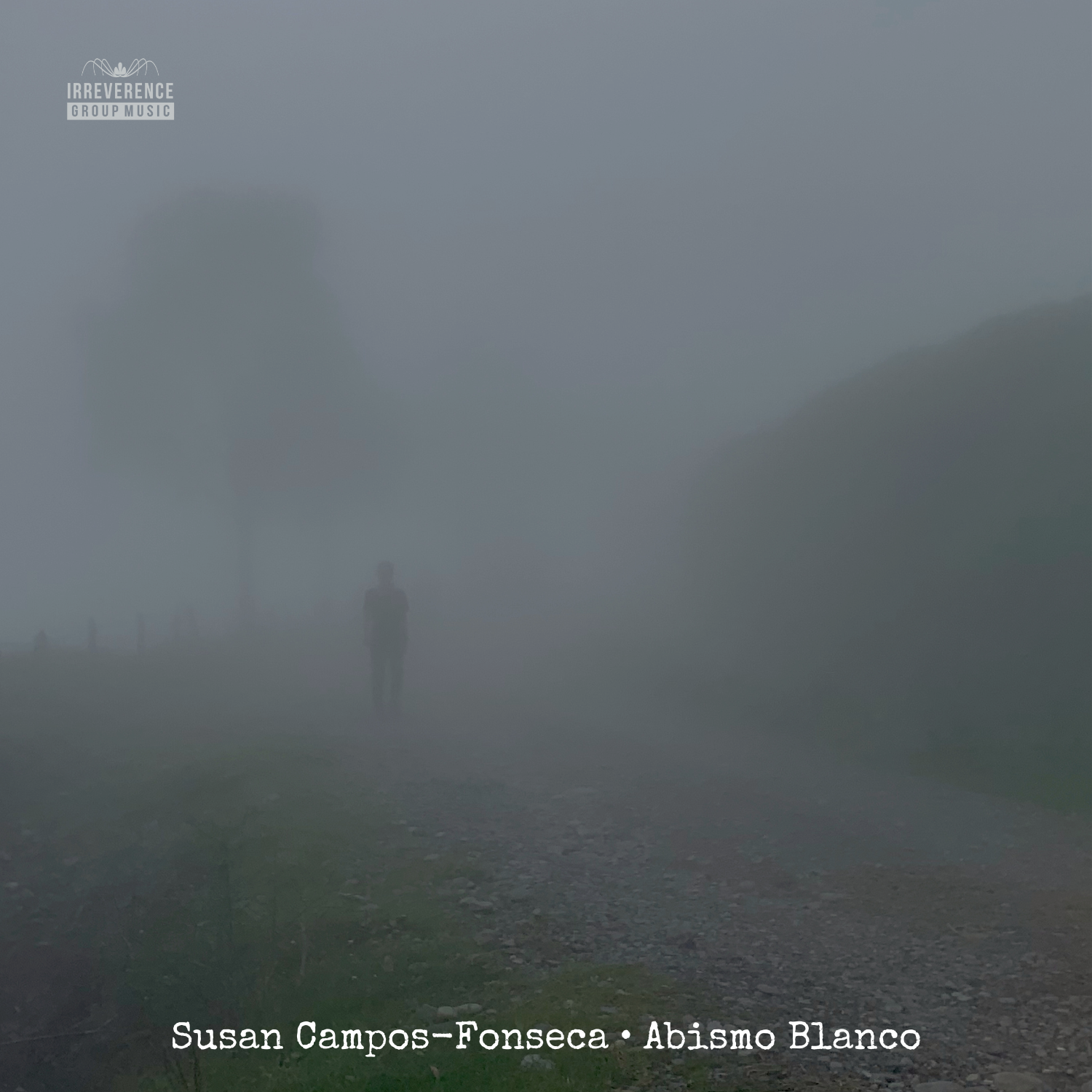Susan Campos—Fonseca:
Abismo Blanco
Release: Feb 23, 2024
Noise artist and Costa Rican composer, Susan Campos—Fonseca has become known through her sonic agency and her experimental musical—research. In her new album, Abismo Blanco, she not only revives the quijongo, a unique musical instrument from northern Costa Rica, whose cultural heritage preserves the fusion of African, Asian, and indigenous influences but also engages the Cabécar indigenous community and the Kjala Bata indigenous women’s association. Abismo Blanco is an exploration and reflection on Mother Earth, presented in a sonorous musical discourse where Campos—Fonseca shares the stage with Isabel Crespo, Julián De La Chica, Low Frequency Trio, Ilde Obando and María Clara Vargas—Cullell.
Listen to Quebrada
Abismo Blanco
-
Format: Album
Release: February 23, 2024
Catalogue: IGM-043
GTIN/EAN/UPC: 4099885966651
Producer: IGM
Commissioned by Susan Campos—Fonseca -
Susan Campos—Fonseca (Quijongo, indigenous brörán’s violin
and electronics)
Low Frequency Trio:
José Luis Hurtado (Piano)
Antonio Rosales (Bass clarinet)
Juan José García (Double bass)
María Clara Vargas Cullell (Harpsichord)
Ileana Moya Obando
Isabel Crespo Pardo (Vocal)
Julián De La Chica (Piano) -
Susan Campos—Fonseca
-
Gabriel D’Annunzio
Inger Christensen -
Campos—Fonseca:
Abismo Blanco:01. Abismo Blanco
Evaporaciones For Quijongo & Harpsichord:
02. I
03. II
04. III
05. Ka̱ Bata
06. Quebrada
07. Hvem Ved [Quien Sabe] -
Commissioned by Susan Campos—Fonseca
Produced by Irreverence Group Music
Music by Susan Campos—Fonseca
Lyrics by Gabriel D’Annunzio & Inger ChristensenSusan Campos—Fonseca (Quijongo)
Low Frequency Trio
María Clara Vargas Cullell (Harpsichord)
Ileana Moya Obando
Isabel Crespo Pardo (Vocal)
Julián De La Chica (Piano)Abismo Blanco: Recorded by Roberto de Elías
at Startrack Studio, Mexico, DF.
Edited & mixed by José Luis Hurtado.
Evaporaciones For Quijongo & Harpsichord:
Recorded & Mixed by Tomás de Camino Beck
at MADC, San José, Costa Rica.
Quebrada Amarilla: Recorded by
at Central de Cine, San José, Costa Rica.
Mixed by Julián De La Chica
at IGMLab Music, Brooklyn, NY
Hvem Ved [Quien Sabe]: Recorded & mixed by Julián De La Chica
at IGMLab Music, Brooklyn, NY.
Album's sound design by Julián De La Chica
at IGMLab Music, Brooklyn, NY.
Mastered by Shochi ShamsAlbum Notes by Jorge David García Castilla
Artwork/Cover: IGM
Photography, courtesy by
Susan Campos—Fonseca
Videos by IGMCampos—Fonseca’s music is published by (BMI)
Manufactured and marketed
by Irreverence Group Music (Brooklyn, NY)
Made in US. Total time: 45 min
Ⓟ & © 2023 IGM

Music NOTES
Walking through the Mist
By Jorge David García Castilla.
Just look, just look at the clouds between the changes and the events.
— Celina Fonseca.
In Costa Rica, there are places where the fog appears to envelop everything. Perhaps due to the heat emanating from volcano craters or the breath of spirits inhabiting the paths, there are locations where light blurs amid clouds caressing the earth's mouth. Rain and sun merge in a vaporous, silent environment, where time seems to suddenly stand still. In this white abyss, ancestors, birds, spirits, insects, and indigenous communities speaking the language of the mountains engage in a complex exchange of energies, giving rise to what we simply call life.
It was there, amid the fog announcing the evening storm, that Campos—Fonseca first spoke to me about the album to which these words serve as an introduction. On the slopes of Turrialba volcano, in a deafening silence that imparted an unreal quality to that morning, I sought to imagine music capable of reflecting the feeling that abyss generated in me. And then I wondered: how to translate to the realm of art, to the shifting terrain of musical listening, an experience as profound as the one gifted to us by the volcano's mouth?
Quien sabe (Hvem ved), a piece for voice, bröran’s violin, piano, and field recording, answers this question, inviting us to walk amid imaginary hazes. Accompanied by a transparent, pristine voice asking, "Who knows if I may call myself otherwise than me" (Inger Christensen); gradually, we delve into the white darkness. Meanwhile, from the piano emerge minimal and delicate chords reminiscent of silhouettes—sometimes trees, sometimes specters—drawn in a blurry manner.
Susan Campos—Fonseca
Photo courtesy of Central de Cine
Costa Rica
Groping along trails and streams, thoughts arise about our place in this mystical environment, about what it means to name ourselves in the world in a certain way, about how our fears and existential doubts end in a "here and now" manifested in the harmonics of the bröran violin and in the ancestral voices of birds, insects, and the wind brought to our listening through field recordings. How shall we name ourselves after recognizing that our sense of self is merely an illusion derived from a separatist zeal?
Abismo Blanco, a piece dedicated to the Low Frequency Trio ensemble, offers a second perspective to Susan's quest for music that "walks into the fog." By combining the scorching sonority of a group specialized in low frequencies, this work refers us to the multiple presences that inhabit where the human eye seems to surrender to blindness. Beyond what we can perceive at a glance, rivers run in the bowels of volcanoes, birds fly, rocks sing, and ghosts lurk, in a stream of life beyond life that fluctuates in all directions.
Where does the sound of the piano strings that are rubbed and percussed begin, and where do the bass and clarinet multiphons that merge into intermittent gestures end? Sometimes with violence, sometimes with delicacy, the energy of the volcano is reflected in the continuum of harmonics, resonances, and intensities emanating from the trio. Similar to the silhouettes drawn amid the fog, it is impossible to distinguish isolated bodies or musical phrases in the conventional sense. Instead, we encounter pieces of melodies, chords, and percussions not originating from separate instruments but from a network of sonorities constituting a kind of ecosystem.
Evaporaciones for quijongo & harpsichord, is a series of three short pieces exploring the blend of two ancestral sonorities, belonging to different traditions but merging into the composer's history and representing Costa Rica's enormous cultural wealth.

Susan Campos—Fonseca & María Clara Vargas—Cullell
Performing Evaporaciones at El Tanque, Museo de Artes y Diseño Contemporáneo
Just as water becomes steam in contact with the heat of a shining sun, harpsichord chords in "Evaporaciones" transform into complex textures. Indefinable intervals within the analytical system of Western music resemble the porosity and greyish colors of volcanic stone. Close your eyes while listening to the quijongo's harmonics emanating from the baroque instrument, and you'll feel the breeze dampening your body as light, like mist dissipating, reveals unsuspected landscapes.
"Where is that house with all the open doors that I’m still looking for and can’t find anymore?" (Gabriel D’Annunzio). This question, emerging from the streams looming between the abyss, embodied in Susan’s mother's voice, not only closes the fourth theme of our album, the song entitled Quebrada, but is perhaps the question that runs through the five compositions of it.
We walk in fallen leaves, cross rivers and mountains, spend our lives rehearsing songs and babbling, in search of a lost link with that, however, lies within the reach of our footprints. Like the children to whom this song is dedicated—those born and living amid steel, those who don't know how to recognize themselves as part of the earth—we walk in the fog in search of a house that we cannot find. Perhaps the problem, as the insistent sound of the quijongo suggests, is that we cling to seeing the house in the gloom when all that is really required is to listen and let ourselves be guided by the murmurs of the ancestors.
So we come to the last piece, Ka̱ Bata, which gathers the voices of mothers and children of the Cabécar community of Alto Pacuare, in the mountains of the Atlantic watershed of Costa Rica. It combines the harrowing sonority of the brönan violin with the electronic flashes of artisanal synthesizers created by the Bolivian-Argentine collective DLP_electronics.
Among the misty voices of children and women, we discern the words composed by the indigenous artist Carlos Brenny Hidalgo: "In the high mountains, where the river is born, there was that tree, under its shadow, I heard my grandfather(a) sing." Thus, the piece invites us to feel the singing of grandmothers and grandparents, the birth of rivers, the life cycle connecting childhood with motherhood, the earth with clouds, rain with the thirsty roots of trees.
Susan Campos—Fonseca &
Indígenous Artist & activist Ileana [Moya] Obando
with Cabécar indigenous children.
Alto Pacuare (Costa Rica), 2023.
This album is, in short, a musical walk amid the misty mountains of Costa Rica, among the voices of ancestors resonating in the ravines, among the singing of indigenous communities reminding us that the land, however much we build steel castles, is our first and last home.
Abismo Blanco is also a call to question binary oppositions that sharply separate the "traditional" from the "new," the "own" from the "alien," the "natural" from that which emanates from culture. Just as the mountain is a complex environment where multiple existences share energy, human experience is an equally complex phenomenon where diverse knowledge, temporalities, and practices can coexist without excluding each other, as long as we acknowledge them as inseparable parts of a larger system.
After all, the spirit of the fog not only concentrates on the particular paths where the white abyss emanates but extends its roots throughout the jungle. Its blood flows between the rivers and springs carrying the incessant flow of life, while its voice is distributed among the singing of hummingbirds, cicadas, and orioles.
What changes and what remains, what passes through culture and what remains hidden from the human gaze—there is nothing in the mountains that does not connect with that warm breath of white densities. Similarly, there is nothing in this album that can be separated from the social and personal biography, from the volcanic experience and ancestral memory, from such a complex and multidimensional artist, but above all, from a walker always open to deep listening, as is the composer Susan Campos—Fonseca.
Mexico City, Feb 10, 2024.
About the Author
Jorge David García Castilla a is a Mexican composer and professor in the Master's and Doctorate programs in Music and Technology at UNAM.
Instagram



